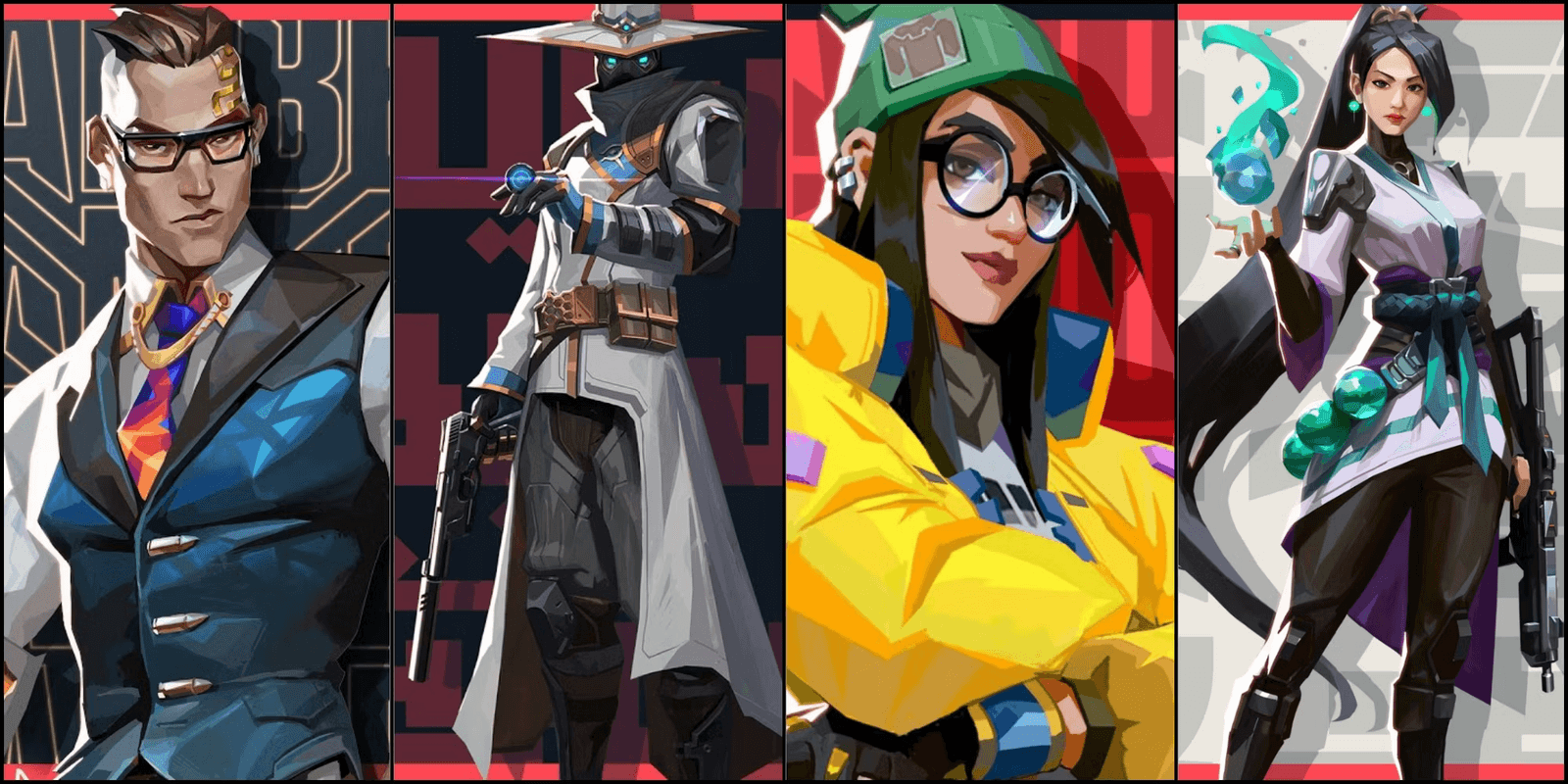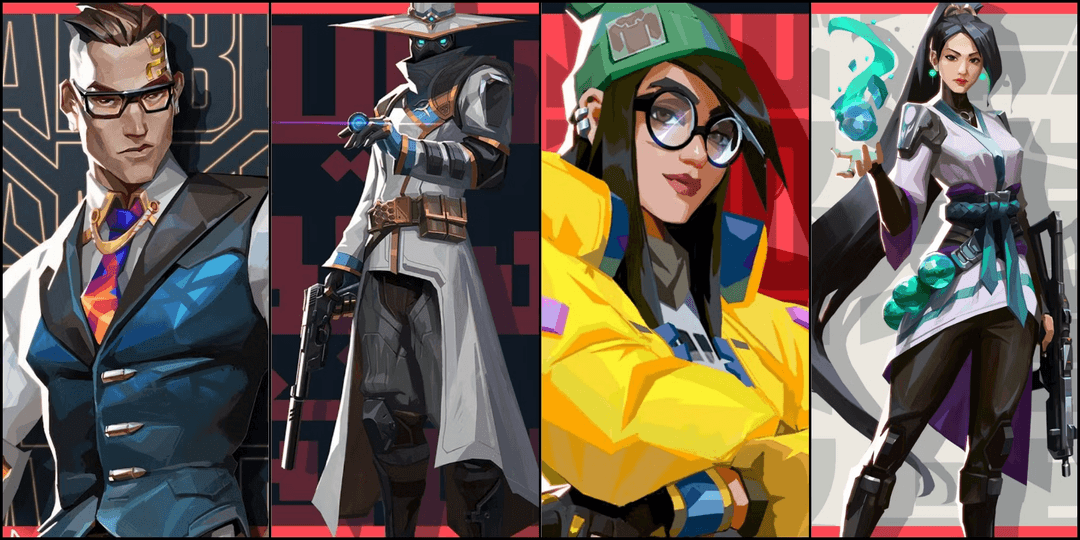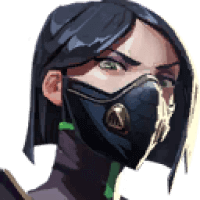


Among the diverse roles available in Valorant, Sentinel agents stand out as the linchpins of defence. Their unique abilities set the stage for victory, making them indispensable in a well-rounded team.
Whether you're a beginner or looking to refine your skills, this guide is your one-stop resource for all things Sentinel.
Sentinel agents in Valorant are essential for team defence. They typically possess abilities like traps, slows, blockades, or tools for gathering intel and taking control.
As a Sentinel, it's crucial to avoid playing aggressively for early pickoffs, prioritizing staying alive throughout the round to help your team with your abilities.
Understanding each agent's role is crucial to leveraging their full potential and enhancing your team's defensive capabilities.

Each Sentinel has a distinct role and playstyle:
Cypher is the surveillance expert. His gadgets provide unparalleled intel, letting the team anticipate the enemy's moves.
Killjoy brings ingenious inventions into play. Her turrets and traps not only damage but also disrupt enemy tactics.
Sage is the healer and barrier-creator. Her abilities can turn the tide of a battle by resurrecting fallen teammates and blocking key paths.
Viper (recently reclassified as a Sentinel) combines toxic chemicals with strategic area denial. Her skills force enemies to reconsider their approach or suffer debilitating consequences.
Chamber is a unique blend of lethality and control. With his ability to place teleport anchors and his deadly, precision-based weaponry, he redefines the traditional Sentinel role by adding a layer of tactical offense to his defensive prowess.

Cypher, the surveillance expert, possesses a toolkit designed for gathering crucial intel.
His Spycam allows for remote viewing of key areas, perfect for spotting enemy movements without exposing oneself. Cyber Cage, an ability that blocks vision, is instantly tossed forward and becomes an invisible, indefinite ground placement upon landing. Cypher's Trapwire, another one of his abilities, can be strategically placed across entry points to alert and immobilize unsuspecting enemies. Cypher's ultimate ability, Neural Theft, extracts information from a downed opponent, revealing the location of their teammates and providing a significant tactical advantage.
Tips for Cypher include using his Spycam in high elevation spots for maximum visibility and placing Trapwires at ankle level in unexpected locations to catch opponents off-guard. Cypher is currently one of the best sentinels in the game due to his ability buffs.

Killjoy, known for her inventive approach, brings a blend of offensive and defensive gadgets.
Her Turret not only deals damage but also serves as an early warning system against flanking enemies. The Alarmbot, when triggered, debuffs enemies, making them vulnerable to attacks. Her Nanoswarm grenades are perfect for ambushes, dealing significant area damage. Her Lockdown ultimate can clear out and control large portions of the map, ideal for retakes or post-plant situations.
Killjoy players should experiment with gadget placements, using her Turret to watch flank routes and deploying Nanoswarm grenades in common plant spots for surprise attacks. With her outstanding lurking power, she can support her team even when she's not sticking with them.

Sage, the supportive backbone of any team, offers both healing and fortification abilities.
Her Healing Orb can restore health to herself or a teammate, a game-changer in prolonged engagements. The Barrier Orb creates solid walls, perfect for blocking enemy paths or creating new angles. Sage's Slow Orb hampers enemy movement, making them easy targets. Sage's wall, highly useful in Valorant, creates barriers and effectively blocks site entrances. Her ultimate, Resurrection, can bring a fallen teammate back into the fight, potentially swinging the round in your favor.
Sage players should prioritize survival, using her Barrier Orb to control space and her Healing Orb judiciously to sustain teammates during critical moments.

Viper, recently reclassified as a Sentinel, excels in area denial and control.
Her Toxic Screen deploys a long line of gas emitters, creating a vision-blocking wall that can cut sites in half. Poison Cloud, a throwable gas emitter, can be activated to create a local smokescreen. Her ultimate, Viper's Pit, creates a massive toxic cloud, reducing visibility and decaying the health of all inside it.
Viper's abilities require careful resource management, as her toxin meter depletes with use. Strategic placement of her Toxic Screen can split enemy teams, and Poison Cloud can be used to deny key sightlines or defuse spots.

Chamber redefines the Sentinel role by combining defensive control with lethal precision.
His Trademark ability lays down traps that scan and slow enemies, ideal for securing flanks and alerting the team to enemy movement. His Headhunter ability, a custom-made heavy pistol, allows Chamber to take precise shots, making him effective in holding angles and picking off enemies from a distance. The Rendezvous ability lets him place two teleport anchors, providing quick repositioning and escape routes. Chamber's ultimate, Tour de Force, is a powerful sniper rifle that slows and damages enemies on a successful hit.
Utilize Chamber's unique weaponry for aggressive picks while maintaining a defensive stance, and strategically place his Rendezvous anchors for quick rotations or escapes.
By adapting to each map's unique layout and dynamics, Sentinel players can maximize their impact, helping their team secure victory.
On Ascent, Cypher's Spycam can provide valuable intel on mid and B site entrances, while Sage's Barrier Orb is crucial for controlling key areas like the narrow entrance to A site. Killjoy can fortify either site with her Turret and Alarmbot, making enemy entry challenging.
In Icebox, Viper's Toxic Screen can effectively cut through both A and B sites, providing cover and splitting enemy lines of sight. Killjoy's Turret, when placed on elevated positions, can oversee large areas, providing early warnings and chip damage.
On Split, Sage's Barrier Orb can be used creatively to block off crucial pathways like mid vents or B heaven. Cypher's Trapwires are effective in narrow corridors, providing ample warning of enemy pushes.
For Bind, Viper can use her Poison Cloud to control key chokepoints like Hookah or B Long. Cypher's Spycam can be placed in versatile locations, giving insight into enemy movements around A Short or B Site.
In Haven, utilizing Killjoy's Lockdown during retake scenarios can flush enemies out of hiding, especially in post-plant situations. Sage's Slow Orb is effective in controlling enemy advances through Haven's multiple entry points to each site.
Sentinel agents are the backbone of a team's defense, but they shine brightest when synergized with other roles. For example, pairing Sage's healing abilities with aggressive Duelists can enable bolder plays. Cypher's intel pairs well with Initiators, guiding their utility for maximum impact.
Mastering Sentinel agents in Valorant isn't just about knowing their abilities; it's about strategic thinking and anticipation. Here are some advanced strategies:
These strategies require practice and a deep understanding of both your agent and the game's mechanics. Experiment in different scenarios and learn from each match.
Consistent practice and analysis are key to excel as a Sentinel in Valorant. Here are some tips to help you improve:
Regularly spend time practising in custom games to learn the nuances of each map. Experiment with ability placements and learn from trial and error.
Observe and learn from professional players who specialize in Sentinel agents. Note their positioning, decision-making, and ability usage.
Review your games with a professional Valorant coach using Valorant's replay feature to look for mistakes and identify areas for improvement.
Remember, improvement is a continuous process. Stay dedicated, and you'll see your skills grow over time
Even the best players can make mistakes. By being mindful of these mistakes and actively working to avoid them, you'll become a more effective and valuable team member. Here are common pitfalls for Sentinel players and how to avoid them:
Overextending: As a Sentinel, your role is often to hold positions rather than push aggressively. Stick to your role and trust your teammates to do theirs.
Overrotation: This is often driven by the urge to quickly support teammates. However, it can leave a previously guarded site vulnerable. As a Sentinel, it's vital to assess the threat level accurately and rotate only when necessary, ensuring that your crucial defensive position is not compromised.
Misusing Abilities: Using Sage's Resurrection at the wrong time or wasting Killjoy's Nanoswarm can cost rounds. Think carefully about when and where to use your abilities.
Neglecting Communication: Sentinels often have the best overview of the battlefield. Communicate with your team, share intel on enemies' setup, and coordinate strategies.
These insights from experienced players offer valuable lessons that can be incorporated into your gameplay:
Cypher Main: "Always be two steps ahead. Think like your enemy and use your Spycam and Tripwire to disrupt their plans."
Sage Main: "Your team relies on you. Prioritize healing and saving your Resurrection for key moments can change the outcome of the game."
Killjoy Main: "Placement is everything. Experiment with your Turret and traps to find placements that catch enemies by surprise."
We've covered a lot in this guide on how to play Sentinels – from understanding the roles of Sentinel agents to advanced strategies and tips for improvement. Remember, mastering the art of defence in Valorant is a journey, and every match is a learning opportunity. Practice diligently, analyze your gameplay, and stay adaptable.